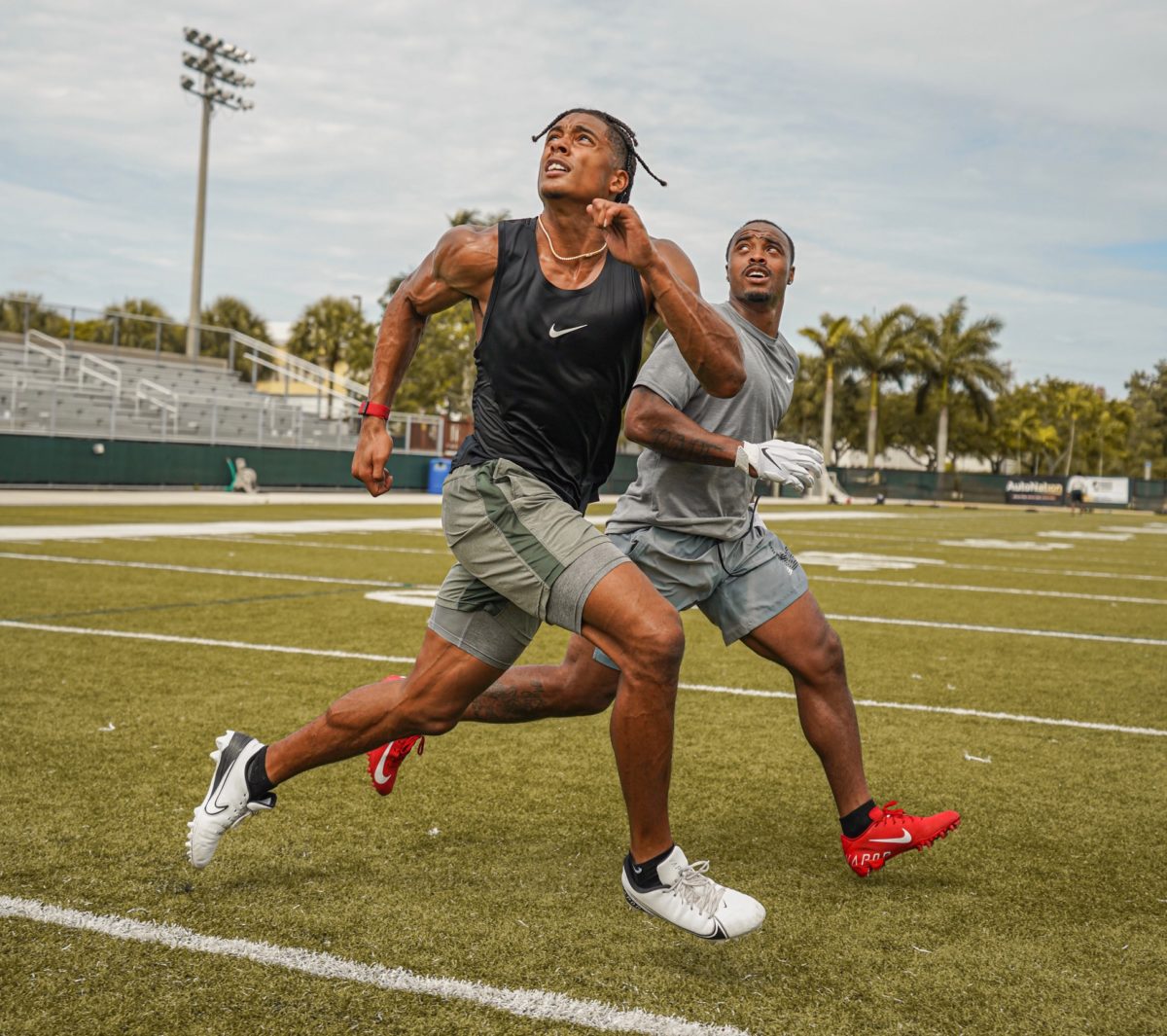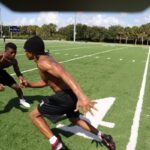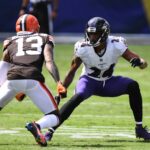Amateur fan and professional coach alike will tell you that one of their pet peeves when it comes to defensive backs is not looking for the football. There’s nothing like a guy being in a player’s hip pocket and having the wide receiver catch the football for no reason other than the defensive back just refused to look for the football.
We’ve certainly all seen that situation play itself out hundreds of times as we have watched football games whether as a player, fan or a coach. Having played, coached and now trained defensive backs over the course of several decades, I have been able to determine some very solid reasons as for why this happens to defensive backs. All of the reasons trace back to one word and that is fear.
So here are the 3 main reasons that defensive backs don’t look for the football when they are in coverage on a wide receiver.
(1) Fear That the Ball is Coming
That one seems wild doesn’t it? Well it’s actually true. Some defensive backs have resigned themselves to the thought that if they have great coverage then hopefully the quarterback won’t throw it to their guy. Typically this defensive back doesn’t really trust their ball skills especially vs. that of a wide receiver. They either don’t trust their ability to track the ball effectively or actually catch the ball once it hits their hands. So literally, their mind is saying “please don’t throw it to my guy. Please don’t throw it to my guy.” For some, this is how they feel all the time. For others, this is just limited to certain situations and or against certain wide receivers.
How do we fix this? Endless ball drills. Simply get used to catching the football especially from far away. Learn how to track a deep ball and settle into the right place to catch the ball with some efficiency. If you have a quarterback friend, have him throw you routes like a wide receiver, with a special emphasis on the deep routes at the top end of the route tree (7, 8 and 9 routes).
(2) Fear That Ball Will Pass Your Head As Soon As You Look
We have seen this happen before right? As soon as the defensive back turns his head to locate the ball, the ball is passing right by his helmet and into the hands of the wide receiver. Hey, this happens. Some guys have a hard time recovering from that especially if it happens to them often when they first start playing defensive back. Suddenly, the answer becomes never looking for the ball to avoid this happening. That’s a bad move. Sure you can turn your entire strategy into just playing a wide receiver’s hands in all situations but guess what, that’s not going to work all the time either. Some wide receivers will put their hands up late. Sometimes the ball will be thrown to an area that you can’t defend unless you look. What will happen most often though is a lot of pass interference penalties as you hit the wide receivers’ hands prematurely, face guard him or run into him on under thrown balls.
How do we fix this? Incorporate a lot of blind ball drills. Blind ball drills are when you don’t see the ball thrown and have to pick it up in mid-flight to judge it and catch it. One of the most often used blind ball drills for DBs involve them back pedaling towards a coach facing away from them and having the coach throw the ball then yell “ball!” so they can turn around, locate the ball quickly and catch it. Another good one is simply running a deep 9 route looking straight ahead, have a coach or a friend throw the ball to you and yell “ball!” once it is already in flight. These drills will get you more comfortable judging a ball in flight and will give you the confidence to turn your head sooner and make a play on a throw.
(3) Fear that the WR Will Change Direction
Sometimes this is a legitimate fear. Sometimes it can be overdone. Double moves can plague a defensive back’s mind. Play defensive back long enough and you will get hit by and beat by one or more. It’s one of those things that happen. Some guys have a hard time getting over it. This is why a coach tells you that you have to have a short memory. Getting beat by a double move does not mean that you should never look for the ball again.
Guys that get hit with this disease will sometimes take it to the extreme. They will be in coverage for four seconds and be paralyzed with fear that the route will change by the wide receiver the moment they look back for the ball. You simply can not be an effective defensive back playing this way.
How do we fix this. First, train yourself to have proper eye discipline. Learn how to drive your eyes from the quarterback to the wide receiver out of your breaks if in zone or drive to the wide receiver out of your breaks if you are in man. Typically taking 2-3 steps with your eyes on the wide receiver will be enough to determine if the route you are breaking on is true or if it’s fake. If you are further down field, keep a clock in your head. After a certain amount of time in coverage on a route, it’s time to buy what the wide receiver is selling you. If you are in close contact, turn your head around and grab the prize.
One of the best ways to know when to look, outside of proper discipline, is through careful film study. Many times film study can tell you when a team is likely to pull a fast one. Film study will also tell you what downfield routes may have several twists and turns. Knowing a team’s tendencies will always be your friend when you are trying to play great defense.
So take heed my last line of defenders. If any of these situations describe you, get to work on the solutions I proposed. Those two interceptions you were going to have this season can now turn into six and put you into rock star status.
Chad Wilson is the owner of All Eyes DB Camp and author of "101 DB Tips". He played college football at the University of Miami and briefly in the NFL for the Seattle Seahawks. Over his 15 year high school football coaching career, he tutored over a dozen Division I defensive backs and as a trainer has worked with NFL All Pros, first round draft picks, college football All Americans and Top 10 ranked high school football prospects.









